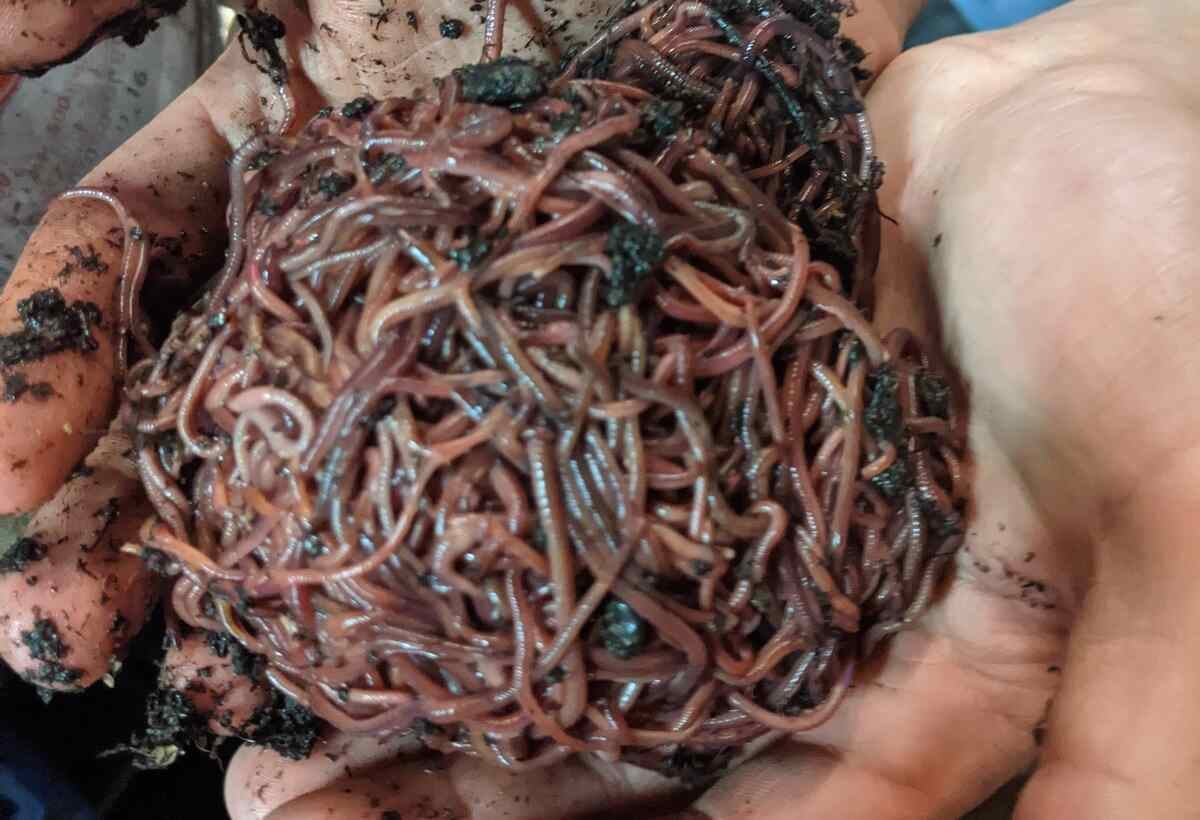Open the Secrets of Red Wigglers: Your Overview to Composting Success
The combination of red wigglers into composting techniques presents a considerable chance for enhancing soil health and wellness and promoting sustainability. These microorganisms are not simply effective recyclers of organic waste; they use a myriad of advantages that can change garden administration. Comprehending their demands and habits is critical for maximizing their possibility, from establishing an ideal worm container to feeding them the appropriate materials. As we explore the necessary parts of successful vermicomposting, one might wonder exactly how these tiny creatures can lead to a much more vivid and productive garden environment.

What Are Red Wigglers?
(Red Wiggler Express)Red wigglers, medically referred to as Eisenia fetida, are a types of earthworm largely made use of in composting due to their amazing ability to decompose organic issue successfully. These worms are defined by their reddish-brown coloration and a fractional body, typically gauging between 3 to 4 inches in size. Unlike various other earthworm types, red wigglers thrive in rich, natural atmospheres, making them perfect for vermicomposting systems.
Belonging To North America, they are often discovered in decomposing leaves and garden compost piles, where they play a crucial function in nutrient recycling. Their adjustment to residing in a wet, aerobic setting enables them to take in huge quantities of natural waste, breaking it down right into nutrient-rich castings that improve soil wellness.
Red wigglers recreate rapidly, with a solitary worm capable of generating a number of cocoons each week, each containing several hatchlings. This rapid recreation price adds to their effectiveness in composting operations. They favor temperatures between 60 ° F and 80 ° F, and their task level raises substantially within this array, additional helping in the disintegration process. Comprehending the biology and habits of red wigglers is necessary for maximizing their possibility in composting applications.
Advantages of Utilizing Red Wigglers
Harnessing the power of red wigglers in composting uses countless advantages that boost soil health and wellness and advertise lasting waste monitoring. These amazing organisms effectively damage down organic matter, changing cooking area scraps and yard waste right into nutrient-rich vermicompost. This finished product is exceptionally beneficial for plant development, as it boosts soil structure, raises wetness retention, and enhances vitamins and mineral schedule.

(Red Wiggler Express)Furthermore, the visibility of red wigglers in your composting system can speed up the composting process, generating top notch compost in a fraction of the moment contrasted to traditional methods. The castings created by these worms are also teeming with helpful microorganisms that better enrich the dirt ecological community.
Establishing Your Worm Container
Creating an effective worm bin is an uncomplicated procedure that can significantly improve your composting efforts. Worm containers can be made from plastic storage space bins, wooden boxes, or commercially readily available worm bins.
Following, prepare the bedding material, which offers as the worms' environment. A mix of shredded newspaper, cardboard, and coconut coir works well, giving a comfortable setting for the worms. Go for a bed linen deepness of about 4-6 inches. Moisten the bed linens gently, ensuring it looks like a wet sponge without excess water pooling near the bottom.

Feeding Your Red Wigglers
To make sure the health and wellness and efficiency of your red wigglers, it is vital to give them with a well balanced diet regimen that fulfills their dietary demands. Red wigglers click site prosper on a varied selection of natural products, which not just provide needed nutrients yet additionally promote efficient composting.
Begin by incorporating cooking area scraps such as veggie peels, fruit cores, and coffee grounds. Prevent citrus fruits, onions, and garlic, as these can be detrimental to worm health. Additionally, introduce shredded paper, cardboard, and dry leaves to produce a well-aerated environment.
Feeding frequency need to be checked; typically, worms can take in half their body weight in food weekly. It is vital to avoid overfeeding, as excess food can lead to unpleasant smells and draw in parasites. A good technique is to add food in little quantities, enabling worms to refine it before introducing more.
Preserving dampness levels is likewise vital; the bed linen should be moist but not soggy. Be certain to regularly examine the temperature level and pH levels of the container to guarantee an optimum atmosphere for your red wigglers, inevitably enhancing their composting effectiveness.
Harvesting and Utilizing Garden Compost
An effective composting process with red wigglers culminates in the abundant, dark garden compost called vermicompost, which can significantly improve dirt health and plant growth. Gathering this nutrient-dense product generally takes place every 3 to 6 months, depending on the size of your system and the quantity of natural issue being refined.
To harvest, gently different the compost from the worms and any undecomposed materials. One reliable method entails moving the components of the container to one side and adding fresh bed linens and food to the empty area, motivating the worms to migrate. After a couple of days, the garden compost can be collected from the contrary side.
It is vital to use vermicompost correctly to maximize its benefits. By including vermicompost right into your gardening routine, you not just recycle organic waste yet additionally produce a successful community that supports lasting gardening methods.
Final Thought
In recap, red wigglers act as phenomenal allies in composting efforts, transforming organic waste right into nutrient-rich vermicompost (Red Wiggler Express). Their special biological characteristics and reliable waste processing capabilities add dramatically to lasting gardening practices. By comprehending the ideal problems for their environment, feeding needs, and garden compost harvesting methods, gardeners can boost soil wellness and advertise plant vitality. Embracing vermicomposting not just reduces land fill waste however additionally cultivates a more environmentally liable technique to gardening and source monitoring.